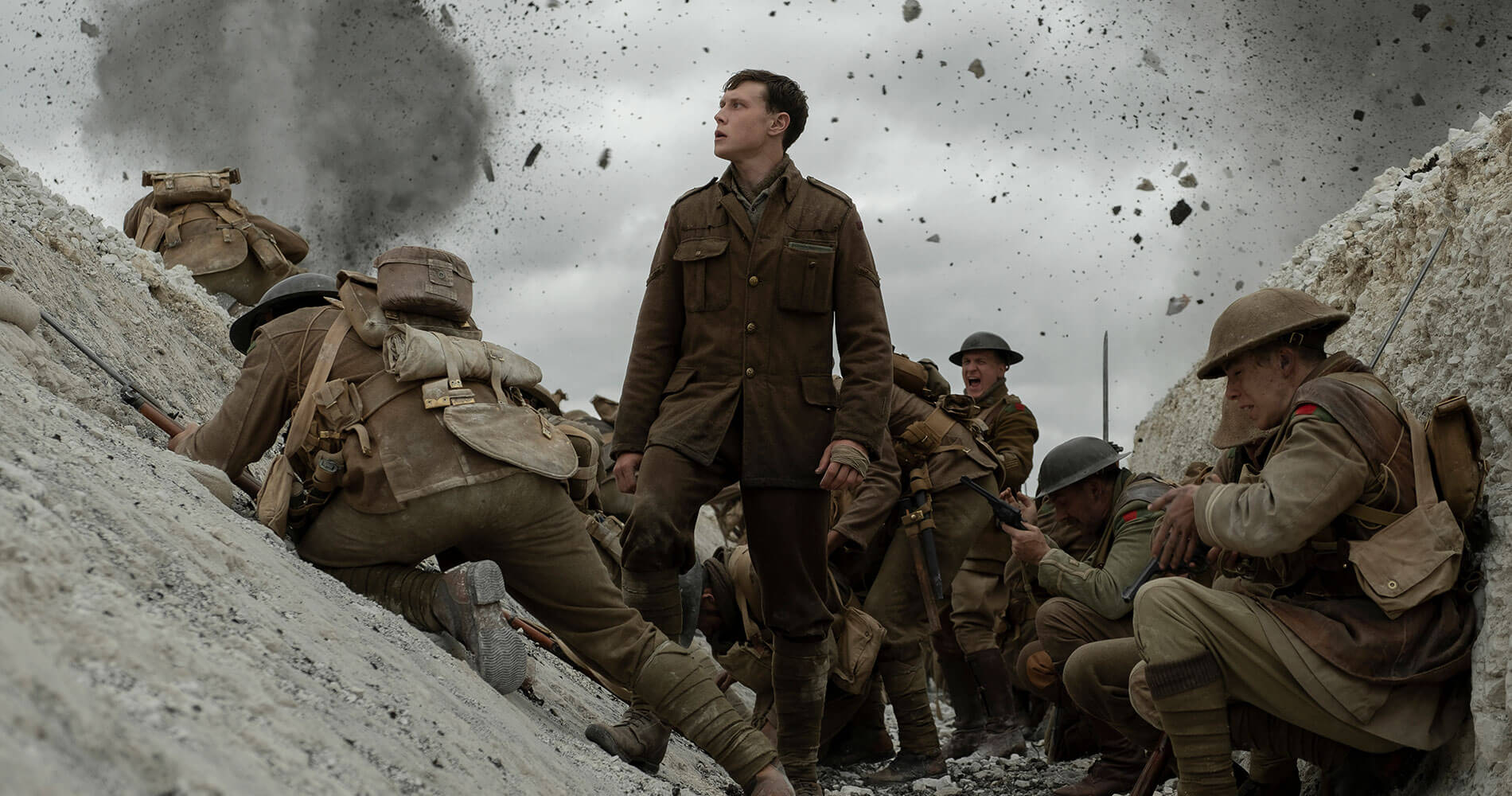Sam Mendes’ war movie “1917” was a late entry to awards season last year but has been knocking them down since, winning the Golden Globe, the Bafta, the Producers’ Guild and Directors’ Guild awards. It’s currently in the lead to take home the Oscar for Best Picture (though “Parasite” is nipping at its heels). It’s not difficult to see why: It’s a polished, dramatic, exciting war film with a gimmick going for it.
In “1917,” two soldiers, Lance Corporal Blake (Dean-Charles Chapman) and Lance Corporal Schofield (George MacKay) are given a mission: to travel a fair number of miles, through treacherous No Man’s Land and enemy territory, to reach a battalion and halt a charge that will result in the loss of that division, some 1,600 men. They set off, and go through a gauntlet of challenges along the way. Will they make it? More importantly, will they make it in time to make a difference?
The film is presented as if it were one long shot, though this is not technically the case, being comprised of some 50 shots stitched together with editing and some effects. Mendes here reunites with his “Skyfall” cinematographer, the legendary Roger Deakins, and together they weave some tremendous sequences. The “gimmick” of the illusory one-take movie might be reductive; it’s not some trick they use to dupe you (though it kind of literally is). That is to say: The “gimmick” isn’t the only thing that makes this film of interest.
The technical tightrope the filmmakers have to walk to pull that off is indeed impressive, but it’s in service to the story and its drama.

Inspired by Mendes’ own grandfather’s stories of World War I, the script by Mendes and Krysty Wilson-Cairns (her first produced screenplay) puts the Lance Corporals through their paces while traversing a minefield, an enemy bunker, booby-trapped homes, etc. on their quest to fulfill their mission. It’s not just an exercise of “see what we can do with technology?” because Hitchcock’s “Rope” did the same thing all the way back in 1948. Besides which, there are actual one-take movies out there, from Alexander Sokurov’s “Russian Ark” (2002) to Sebastian Schipper’s “Victoria” (2015).
What the long takes do do (heh) is position you squarely in the scene, inhabiting the space as the characters do, realizing events as they unfold. It gives a tension to the proceedings, the piano-wire tautness of trying not to get discovered by the enemy, of having to cross a precarious bridge while snipers are trying to take you out, of running in a maze at night with precious little light.
There are also moments of grace and beauty here and there to keep from being a nightmare monotone: an encounter with a civilian, with fellow soldiers, with nature. The single takes also provides more control to the filmmakers as to how information is revealed; you have to wait for the camera to move and swivel to see what characters are looking at; you find yourself looking actively all over the screen to see what else is in the background. It can feel like a videogame, but not in the usually derogatory way that comparison is used. The vicarious thrills feel more immediate because of the way the camera stays with the characters the entire perilous journey.
While many were quick to say this was Mendes’ “Dunkirk,” it’s actually closer to Steven Spielberg’s “Saving Private Ryan,” down to the cameos. Here, it’s Colin Firth, Andrew Scott, Mark Strong and Benedict Cumberbatch. The structure of both films also hangs on the very specific mission given to the men.
While a technical marvel, it doesn’t really say anything new about war: It’s terrible, innocents are slaughtered, we sacrifice much. But it doesn’t need to. It just has to hold attention, entertain, thrill, and move us. Which it does.











































